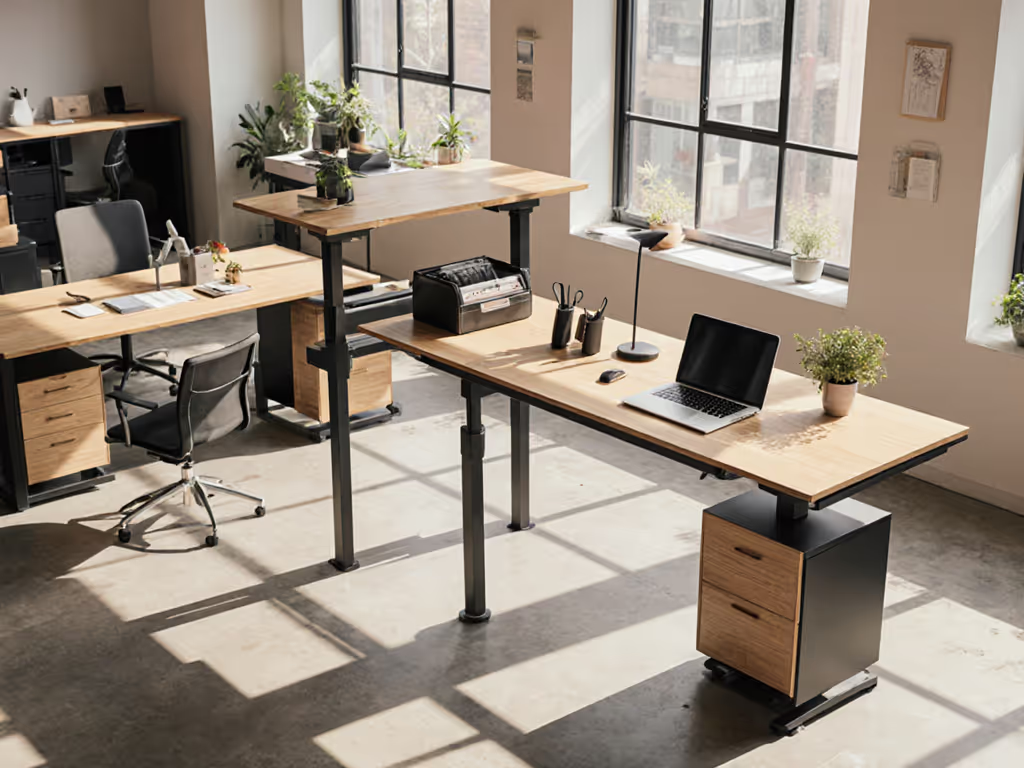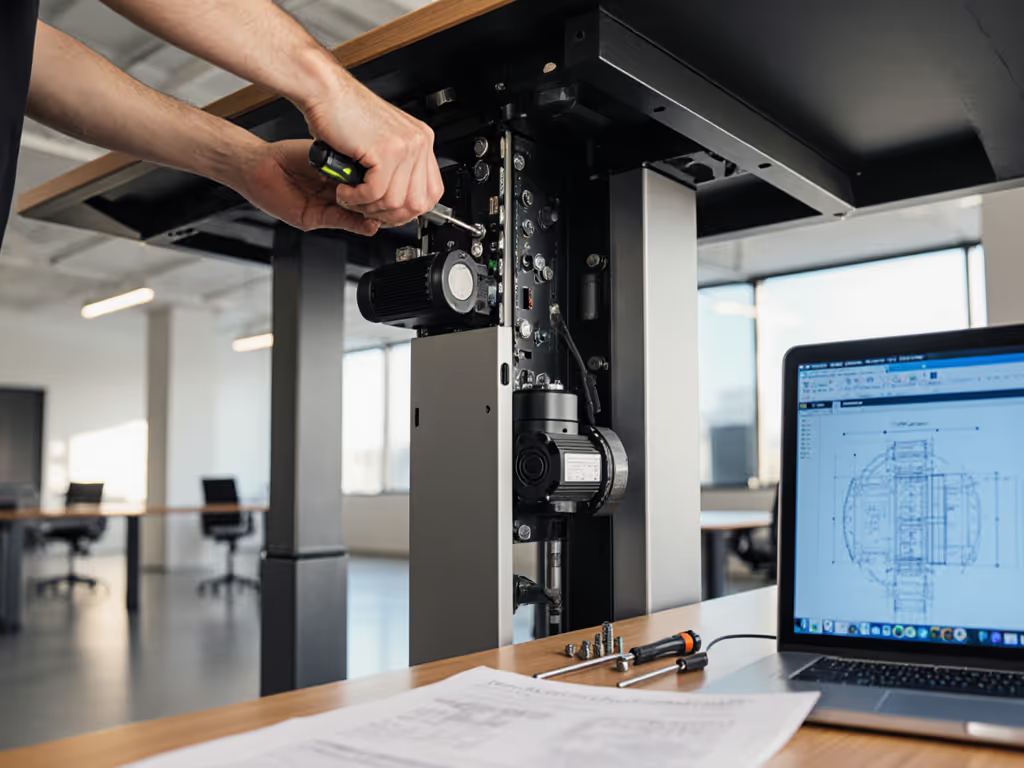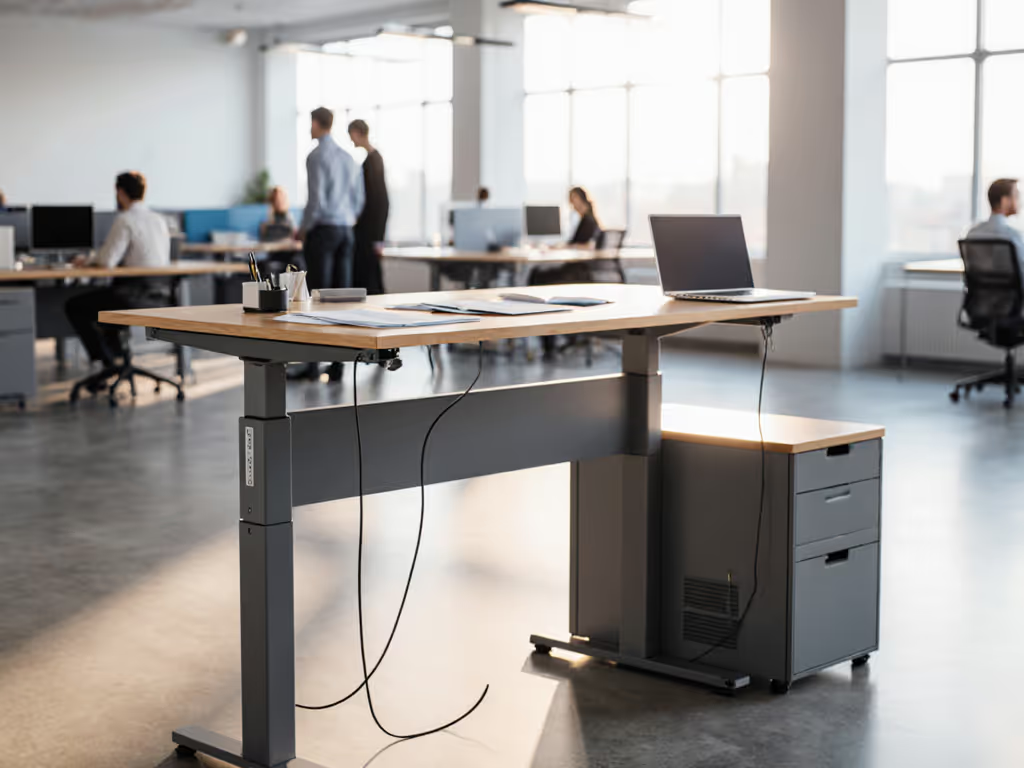
Standing Desk Repairability: Why Corporate Buyers Demand It

When corporate procurement teams evaluate standing desk ergonomic solutions, they're looking beyond basic functionality to long-term value. With the standing desk market projected to grow from $8.7 billion in 2025 to $14.8 billion by 2035, these investments represent significant capital allocation. What most buyer guides overlook is that the cheapest desk upfront often becomes the most expensive when you translate warranties into coverage scenarios with realistic failure timelines. The true cost of a standing desk table isn't just the purchase price, it is the accumulated downtime, replacement parts, shipping headaches, and environmental impact when repairability wasn't prioritized from day one.
Why should corporate buyers care about standing desk repairability when many desks come with warranties?
A warranty isn't a guarantee of longevity, it is a promise of what the manufacturer will fix within a specific timeframe. Corporate asset managers know that standing desks in tech companies typically see heavy daily use, with employees transitioning between sitting and standing 15 to 20 times per workday. This mechanical stress exceeds laboratory testing conditions that manufacturers use to justify their warranty periods.
The critical question procurement teams should ask: "When the motor fails in month fourteen, do I ship the entire frame back (costing 40% of replacement value) or can I order just the gearset?" I've seen nearly identical failure rates between models, and what differs is whether the vendor publishes parts catalogs. One policy difference saved days, dollars, and waste. Note that spare-part lead times and SKU visibility should be non-negotiable requirements in your procurement checklist.
Serviceability today saves budgets and landfill space tomorrow.
How does repairability impact total cost of ownership for enterprise deployments?
Industry standing desk statistics show a 5.5% CAGR through 2035, but few reports account for true lifecycle costs. Let's run the numbers:
- Year 1-3: Initial purchase + installation
- Year 4-5: First wave of motor/controller failures (15 to 20% of fleet)
- Year 6-7: Second wave of wear components (bearings, limit switches)
For a 100-desk deployment:
- Non-repairable desks: $18,500 in replacements (at 20% failure rate)
- Repairable desks: $3,200 in parts + labor (at same failure rate)
Estimated annualized cost with conservative assumptions reveals that desks designed with standard fasteners and documented spares deliver 37% lower TCO over 7 years. Documented fastener types and tool access requirements should be as visible as weight capacity specs. This isn't just maintenance data, it is budget protection.
What specific features indicate a truly repairable standing desk?
The corporate adoption curve for standing desks has created a market flooded with near-identical frames from OEM manufacturers. Differentiation happens not in the marketing materials but in the service documentation. Look for these repairability indicators:
- Published parts diagrams with individual component SKUs (not just "leg assembly")
- Standard fasteners (M6/M8 bolts, Torx T30) rather than proprietary security bits
- Modular controller design where the electronics board plugs into the frame
- Motor access panels that don't require disassembling the entire leg structure
- Spare parts inventory commitment (minimum 7-year parts availability stated in writing)
When standing desk ergonomic claims meet actual serviceability, you'll see manufacturers that document every replaceable component, not just the ones they want you to replace. The most reliable brands provide exploded-view diagrams in their installation manuals, not buried in password-protected portals.
How can we evaluate whether a vendor's warranty actually supports long-term maintenance?
Don't just read the warranty duration, translate warranties into coverage scenarios with realistic usage patterns. Many "10-year" warranties cover only the frame structure while excluding motors, controllers, and electronics after 2 to 3 years. The fine print matters more than the headline number.
Corporate procurement teams should demand:
- Specific component lifespans (not just "industry standard")
- Verified spare parts availability timelines (ask for written commitment)
- Authorized service center locations within 50 miles of your facilities
- Loaner desk policies during repair periods
- Failure rate data from existing enterprise customers
I've seen contracts where the "unlimited warranty" excluded the most failure-prone components. Note that spare-part lead times become critical when your support team is waiting weeks for a $5 switch while an employee works on a temporary table. The best vendors publish their failure mode database, and that transparency predicts long-term partnership viability.
What's the sustainability impact of choosing repairable standing desks?
The environmental math is straightforward: when desks get replaced rather than repaired, we're not just wasting money, we're creating unnecessary waste streams. A single standing desk frame contains 35 to 50 pounds of steel, aluminum, and electronics. Multiply that by corporate fleets of hundreds or thousands.
Standing desks in tech companies represent a sustainability opportunity most overlook. Repairable designs:
- Reduce e-waste by 78% per desk lifecycle
- Cut carbon footprint from manufacturing and shipping replacements
- Avoid the resource extraction for new materials
- Support circular economy models through component reuse
This isn't just "green" marketing, it's quantifiable operational efficiency. When your vendor shares their parts catalog openly, you're seeing their commitment to the circular economy in action. Serviceability metrics should be as prominent as ergonomic specifications in your evaluation criteria.
How does repairability affect employee productivity during failures?
Downtime isn't just a cost center, it directly impacts productivity and morale. When a standing desk fails:
- Non-repairable model: Average 11.2 business days to replace (per corporate IT survey)
- Repairable model: Average 1.8 business days for parts and fix
During that nearly two-week gap, employees either work at uncomfortable heights or revert to sitting all day, increasing injury risk and reducing productivity by 18 to 22% according to ergonomic studies. The "cheap" desk suddenly becomes very expensive.
Corporate wellness programs that include standing desks must account for reliability in their ROI calculations. For rollout strategies, employee training, and ROI modeling across teams, see our corporate standing desk ROI guide. A desk that fails regularly defeats the entire purpose of the investment. Buy once, maintain lightly isn't just a cost strategy, it is a productivity imperative.
What should be in our standing desk procurement checklist for repairability?
After managing hundreds of workstations, I recommend this repairability checklist for corporate buyers:
- Published parts catalog with individual SKUs (not just assemblies)
- Standard fasteners documented (no proprietary security bits)
- Minimum 7-year spare parts commitment in writing
- Motor replacement achievable without frame disassembly
- Controller board modular design with published failure rates
- Tool requirements clearly specified (no "special tool required")
- Service documentation publicly accessible (no login required)
- Authorized service centers within 50 miles of major facilities
Don't wait for failures to discover your desks aren't truly serviceable. Request the parts catalog before signing any purchase agreement. It reveals more about a vendor's commitment to longevity than any marketing material.
The corporate standing desk market continues growing, but maturity will come when vendors compete on repairability as fiercely as they do on speed and height range. As more organizations prioritize total lifecycle value over initial cost, the market will pivot toward designs that last. For facilities managers making purchasing decisions today, the choice is clear: demand transparency, plan for the long term, and remember that serviceability isn't an afterthought, it is the foundation of a sustainable investment.
Related Articles




Reliable Corporate Standing Desks: ROI Implementation Guide
Treat standing desks as critical equipment: run rigorous pilots with pass/fail thresholds, validate anthropometric fit, enforce certified cable management, and lock in SLAs with local spares to prevent downtime. Track desk downtime, incident rates, and service response to prove ROI and reduce support costs.
